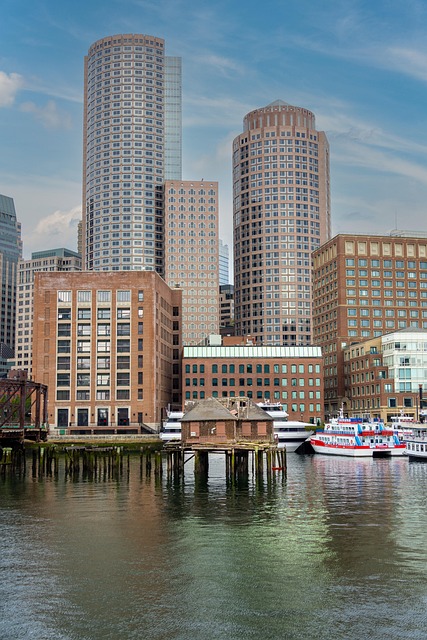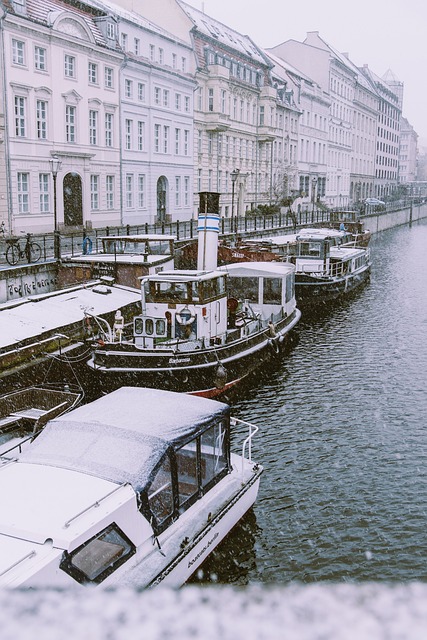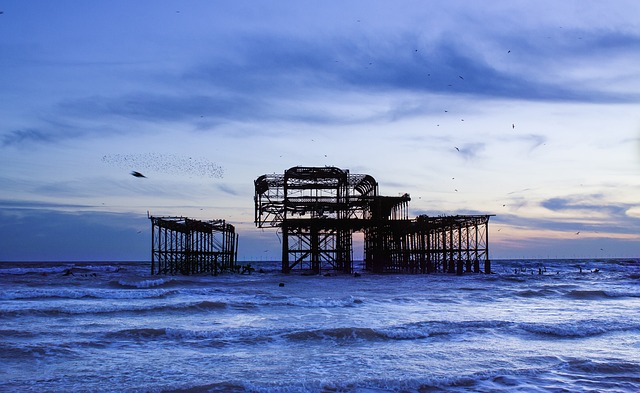Residential Structural Solutions emphasizes fortifying homes using tailored methods, particularly in challenging climates and terrains. Pier Installation is a key technique, driving steel or concrete piers into stable soil to support load-bearing walls, enhancing durability and safety for older homes on unstable soils. This method is crucial for seismic zones and high wind areas, distributing weight evenly and preventing structural damage. Pier systems offer cost-effective reinforcement, raising homes without costly demolitions and fitting diverse terrains. Concrete and steel pier installations provide high load capacities and aesthetic elevation, respectively. Proper design based on geotechnical surveys ensures adequate spacing and load distribution, mitigating settlement issues. Case studies demonstrate successful transformations from struggling structures to stable residences. Future trends focus on advanced materials and technology for lighter, stronger, cost-efficient, and environmentally friendly reinforcement systems.
Residential buildings, despite their seemingly stable appearance, require robust structural support for longevity. This is where Pier Installation comes into play as a pivotal solution for reinforcing homes. This article delves into the comprehensive world of residential structural solutions, exploring various facets of pier installation and its profound impact on property stability. From understanding the basics to design intricacies and real-world case studies, we uncover why this method is a game-changer in the construction industry, ensuring homes remain secure for generations.
Understanding Residential Structural Solutions: An Overview

Residential Structural Solutions refers to the various methods and techniques employed to enhance and secure the structural integrity of homes. It involves understanding the unique challenges that different climates, terrains, and architectural styles present, and tailoring solutions accordingly. One effective method gaining popularity is Pier Installation, a process that strengthens foundations by driving steel or concrete piers into the soil to support load-bearing walls and structures.
This approach is particularly beneficial for older homes or those built on unstable soils, where traditional foundation methods may not be adequate. Pier Installation offers a cost-effective, efficient solution, allowing homeowners to preserve their existing structures while enhancing their durability and safety. It’s a modern twist on an age-old practice, ensuring residential buildings stand strong against the test of time.
The Role of Pier Installation in Strengthening Homes

Pier installation plays a pivotal role in enhancing the structural integrity of residential buildings, especially in areas prone to seismic activity or high wind loads. This technique involves the strategic placement of supports beneath a structure, often concrete or steel, to transfer the weight of the home evenly and distribute it into the soil below. By effectively butting against lateral forces, pier installation strengthens the overall stability of homes, making them more resilient during extreme weather conditions.
The process offers a number of advantages. It allows for the raising and stabilization of existing structures, extending their lifespan without costly demolitions or reconstructions. Additionally, it provides an efficient solution for building on challenging terrains, such as unstable soil or sloping landscapes, where traditional foundation methods may not be feasible.
Types of Pier Systems and Their Applications

Pier systems are a fundamental component in residential structural solutions, offering both support and aesthetic appeal. These systems come in various types, each with unique applications tailored to different building needs and styles. One such type is the concrete pier installation, a robust and long-lasting solution ideal for areas prone to seismic activity or heavy loads. Concrete piers provide an extensive bearing capacity, making them suitable for supporting structural elements like beams and walls.
Another popular option is the steel pier system, known for its strength and versatility. These piers are often used in light-frame construction, offering a quick and efficient way to elevate structures off the ground or span over openings. Steel piers are also versatile in terms of height adjustment and can be customized to fit specific site conditions, ensuring a secure and level foundation for residential buildings.
Benefits of Implementing Pier Support Systems

Implementing pier support systems, such as Pier Installation, offers numerous benefits for residential structures. One of the primary advantages is enhanced structural integrity. These systems provide additional vertical support, redistributing weight and stress, which helps to prevent cracks in walls and foundations, ensuring the longevity and stability of homes.
Moreover, pier installations can improve overall aesthetics. By raising the structure off the ground, these systems create a more visually appealing design, especially in areas prone to flooding or with challenging terrain. This approach allows for better drainage around the building, reducing moisture-related issues and promoting a healthier living environment.
Design Considerations for Effective Pier Installation

When designing for effective pier installation, several key considerations come into play to ensure structural integrity and longevity. First, understanding the soil conditions is paramount; different terrains require specific pier types and depths to mitigate settlement and loading issues. Geotechnical surveys are essential to inform these decisions, guiding the choice of material and construction methods.
Additionally, the load capacity and spacing of piers must align with building codes and engineering standards. Proper spacing ensures even distribution of weight, preventing localized stress that could lead to structural failures over time. Incorporating these design nuances allows for efficient pier installation, providing a solid foundation for residential structures across various landscapes.
Case Studies: Successful Pier Projects in Residential Spaces

Pier Installation has proven to be a game-changer in residential structural solutions, offering effective and efficient support for various challenges. Case studies highlight successful pier projects that have transformed struggling structures into stable homes. In one notable example, a historic home suffering from settling and foundation issues saw dramatic improvements after a series of carefully placed piers were installed. The process not only stabilized the building but also preserved its architectural integrity, showcasing the versatility of pier installation in both aesthetic and structural terms.
Another case involves a modern residential development facing similar structural problems due to poor soil conditions. By implementing a strategic Pier Installation plan, engineers successfully enhanced the stability of the entire complex, ensuring long-term durability and safety for residents. These real-world applications underscore the significance of pier installation as a reliable solution for residential structural concerns, demonstrating its ability to address a range of issues across diverse property types.
Common Challenges and How to Overcome Them During Pier Setup

When it comes to pier installation, residential structural solutions often face common challenges that can delay or complicate the process. One significant hurdle is ensuring proper alignment and stability, especially in older homes where original supports might be inadequate. To overcome this, professionals employ advanced surveying techniques and precise measurements before beginning construction. This meticulous approach guarantees a solid foundation for the new piers, aligning them perfectly with existing structures to avoid further damage or instability.
Another challenge lies in choosing the right materials for pier installation. Different climates and soil conditions require specific solutions. For instance, corrosive environments necessitate treated wooden piers or alternative materials like concrete. Proper material selection not only enhances the longevity of the structure but also ensures it stands robust against varying weather patterns and ground compositions.
Future Trends in Residential Structural Reinforcement

The future of residential structural reinforcement looks promising with a shift towards innovative and sustainable solutions. One such trend is the increased adoption of pier installation, a technique that offers unparalleled stability and strength to existing structures. This method involves strategically placing piers beneath the foundation, addressing common issues like settlement or shifting soil conditions. By reinforcing the structure’s base, pier installation can extend the lifespan of homes and protect them from potential damage caused by environmental factors.
Moreover, as technology advances, we can expect more sophisticated materials and designs in residential structural solutions. Engineers and architects are exploring the use of advanced composites and high-strength steels to create lighter yet stronger reinforcement systems. These innovations not only promote easier installation but also reduce construction costs and minimize the overall environmental impact. With a focus on efficiency and sustainability, future trends in residential structural reinforcement aim to enhance safety while keeping up with evolving building standards and client expectations.
